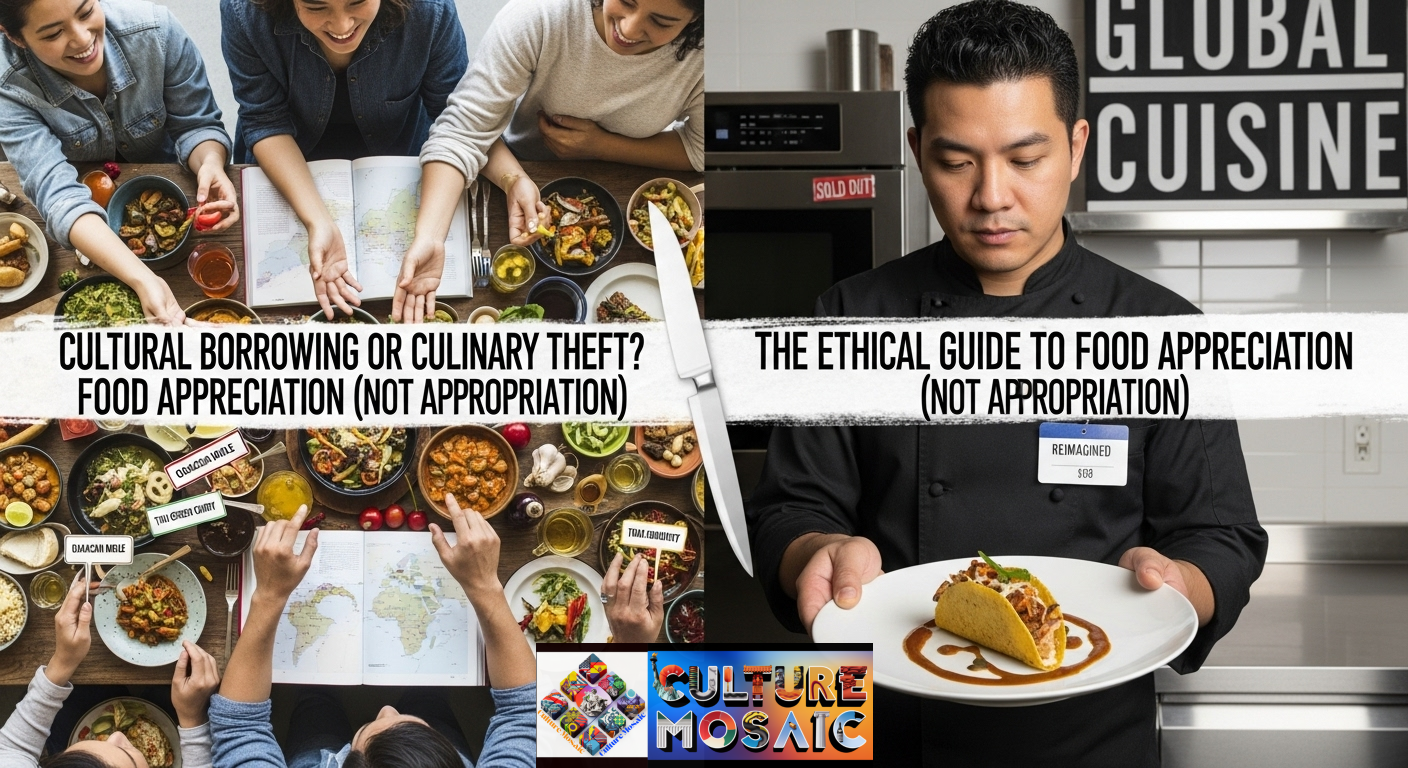The conversation around culinary appropriation has moved from academic circles to dinner tables across America. As diners become more conscious of where their food comes from and who profits from it, a critical question emerges: when does celebrating another culture’s cuisine cross into exploiting it?
This isn’t about telling anyone what they can or cannot cook. It’s about understanding power dynamics, giving credit where it’s due, and ensuring the communities that created beloved dishes actually benefit from their cultural contributions.
Understanding Culinary Appropriation: More Than Just Cooking
Culinary appropriation occurs when someone from a dominant culture takes recipes, cooking techniques, or entire cuisines from marginalized communities, profits from them, and receives acclaim while the original creators remain unacknowledged or struggle financially. It’s not the act of cooking itself that’s problematic. It’s the erasure, the lack of credit, and the economic disparity that defines culinary appropriation.
Consider this: a grandmother in her home country spends decades perfecting a recipe passed down through generations. A chef visits, learns the technique, returns to the US, opens a restaurant featuring that dish at triple the price, and gets written up in major food publications as an innovator. Meanwhile, when someone from that grandmother’s community tries to open a restaurant serving the same traditional food, they struggle to secure funding and face pressure to make their menu more “approachable” for American palates.
That’s culinary appropriation in action.
Defining the Line: Appreciation vs. Appropriation
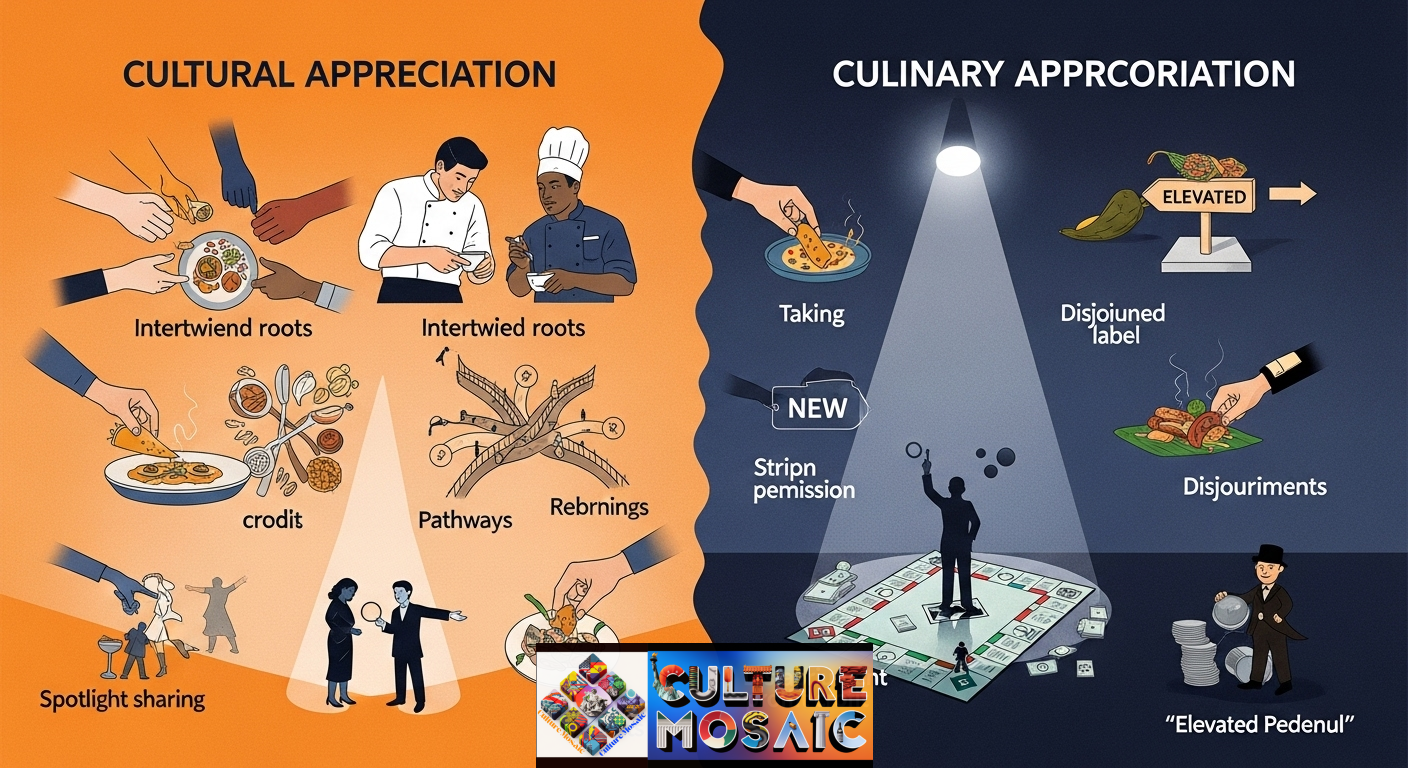
The difference between cultural appreciation and culinary appropriation isn’t always obvious, but there are clear markers that separate the two.
What Cultural Appreciation Looks Like
Cultural appreciation in food involves learning about a cuisine, respecting its origins, crediting the people and communities who created it, and ideally creating pathways for those communities to benefit economically. When a chef studies under masters from another culture, properly credits their teachers, shares the historical and cultural context of dishes, and uses their platform to elevate voices from that community, that’s appreciation.
Appreciation means asking permission, offering collaboration, and sharing both the spotlight and the profits. It means understanding that you’re a guest in someone else’s culinary tradition and behaving accordingly.
What Culinary Appropriation Looks Like
Culinary appropriation happens when someone takes elements from another culture’s food traditions without permission, understanding, or credit. It often involves stripping away cultural context, rebranding traditional dishes as novel creations, profiting significantly while original practitioners struggle, and receiving praise that should go to the culture of origin.
The most damaging form of culinary appropriation includes claiming to have discovered or improved upon dishes that have existed for generations. When chefs describe traditional foods as needing to be “elevated” or made “more sophisticated,” they’re often suggesting the original version was somehow inferior, which reflects and reinforces existing power hierarchies.
The New Chef’s Dilemma: Ownership, Profit, and Erasure
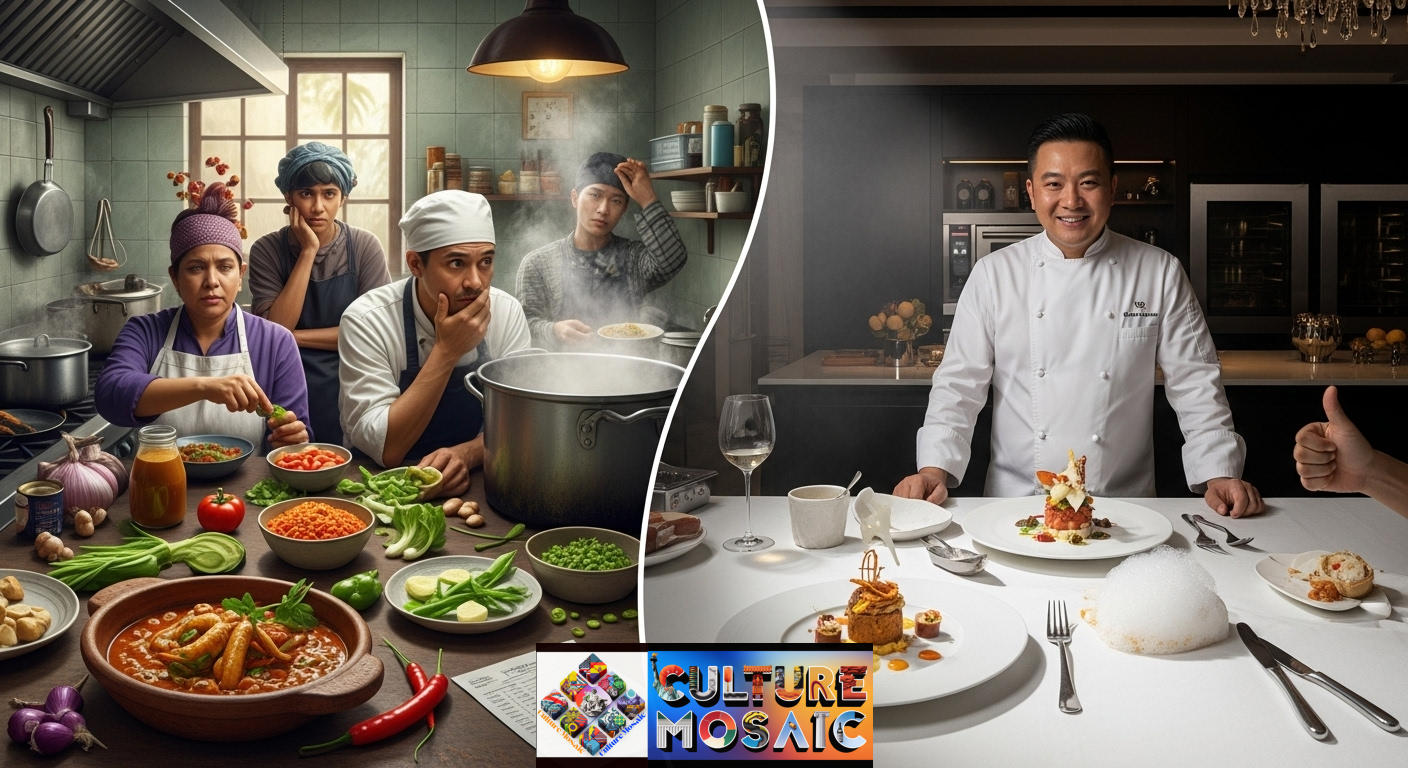
American food culture has a troubling pattern. Chefs from marginalized backgrounds often face significant barriers: difficulty securing restaurant funding, pressure to modify their traditional menus, skepticism about whether American diners will appreciate authentic preparations, and limited media coverage unless they’re presenting food through a lens palatable to mainstream audiences.
Meanwhile, chefs from dominant cultural backgrounds cooking the same cuisines frequently experience immediate acclaim, easier access to investors and prime real estate locations, glowing reviews that use terms like innovative and creative, and the freedom to charge premium prices without being questioned about authenticity.
The “Elevated” Problem
One of the most visible forms of culinary appropriation involves the language of elevation. When restaurants market themselves as serving “elevated” or “refined” versions of ethnic cuisines, they’re implicitly suggesting the original versions are unrefined or common. This messaging erases the sophistication and technique that already exists in traditional preparations.
The problem intensifies when these elevated versions become more celebrated and profitable than restaurants run by people from the cuisine’s culture of origin. A Thai restaurant owned by a Thai family might charge reasonable prices and struggle with rent, while a restaurant run by a white chef serving deconstructed Thai flavors charges three times as much and gets featured in national publications.
The Authenticity Paradox
There’s also a damaging double standard around authenticity. Restaurants run by immigrants or people of color are often expected to be authentic, affordable, and casual. When they try to charge more or experiment with their own traditions, they face criticism. Yet chefs from outside those cultures face no such restrictions. They’re praised for creativity when they modify traditional recipes, while chefs from within the culture who do the same thing might be accused of betraying their heritage.
This is culinary appropriation functioning as a structural barrier, not just an individual moral failing.
The Diner’s Responsibility: How to Be an Ethical Foodie
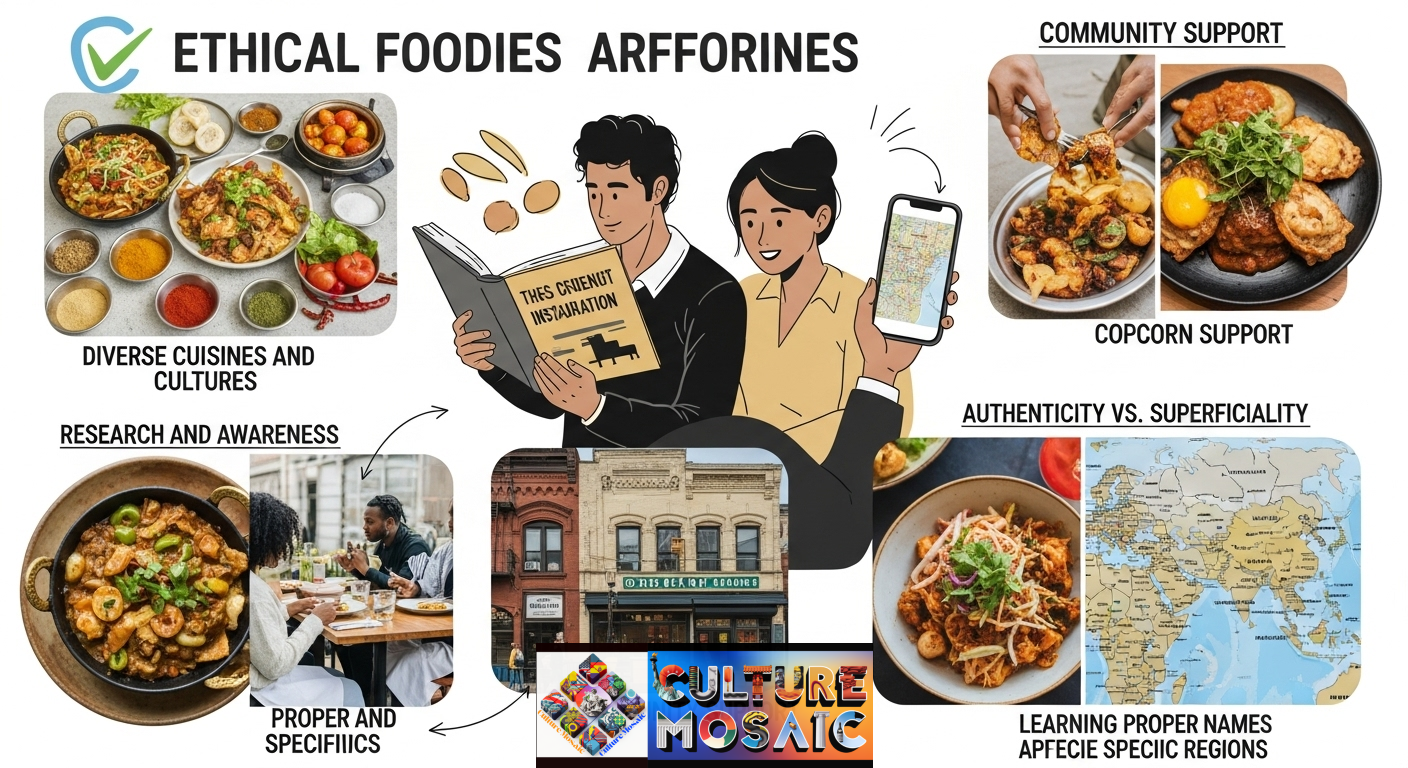
If you care about food culture and want to avoid contributing to culinary appropriation, there are concrete steps you can take.
Research Before You Dine
Before choosing a restaurant, do a quick search. Who owns it? Do they have a connection to the cuisine they’re serving? Check their website and social media. Do they provide context about the dishes and their origins? Are they citing specific regions and traditions, or using vague terminology like “Asian fusion” that erases cultural specificity?
Seek Out Community Voices
When you want to try a new cuisine, look for restaurants in neighborhoods where that community actually lives. These establishments often face higher barriers to mainstream success but offer more authentic experiences and directly support the communities whose food you’re enjoying. Your dining dollars are votes for which businesses succeed.
Question the Narrative
Pay attention to how food media describes restaurants and chefs. Are they using colonial language like “discovered” or “brought back”? Are they centering the chef’s personal journey over the cultural history of the food? When you see culinary appropriation being celebrated, call it out. Comment on articles, choose different restaurants, and explain why.
Learn the Proper Names
Stop using umbrella terms. Instead of “Asian food,” specify Vietnamese, Korean, Thai, or the exact region the dish comes from. Instead of “Mexican,” specify whether it’s Oaxacan, from Mexico City, or from the Yucatan Peninsula. This small act acknowledges the diversity and specificity of culinary traditions rather than homogenizing them.
Support Authenticity Over Aesthetic
The most Instagram-worthy restaurant might not be the most ethical choice. Sometimes the best food comes from places that don’t have polished branding or trendy interior design. Suppose you’re choosing restaurants primarily based on their ability to provide content for social media, rather than their connection to the food they serve. In that case, you might be contributing to culinary appropriation.
Beyond the Recipe: Paying the Cultural Tax

True appreciation requires more than acknowledgment. It demands material support for the communities whose culinary traditions are being shared and profited from.
What Financial Reciprocity Looks Like
Some chefs and restaurant groups are pioneering new models. They’re establishing formal partnerships with communities of origin, creating mentorship programs that train and fund chefs from marginalized backgrounds, donating portions of profits to cultural preservation organizations in the countries where their recipes originate, and using their platforms to actively promote restaurants run by people from the cultures they’re drawing from.
These aren’t acts of charity. They recognize that when you build a business on someone else’s cultural knowledge, you have an obligation to ensure that the community benefits too.
The Collaborative Model
Rather than one chef learning techniques and opening their own restaurant, collaborative models involve ongoing partnerships. A chef interested in serving a cuisine outside their own background might co-own a restaurant with someone from that culture, share executive chef titles and decision-making power equally, and structure profit sharing that reflects the cultural knowledge being contributed, not just the financial investment.
This model prevents culinary appropriation by ensuring that the people with cultural expertise aren’t just consultants but equal partners with equal power and compensation.
Education and Context
Restaurants can also combat culinary appropriation by investing in education. Detailed menu descriptions that explain the cultural and historical context of dishes, staff training that goes beyond recipes to include cultural understanding, events that feature speakers and experts from the communities whose food is being served, and transparent sourcing that credits specific suppliers and knowledge holders all contribute to appreciation rather than appropriation.
The Future of American Food Culture
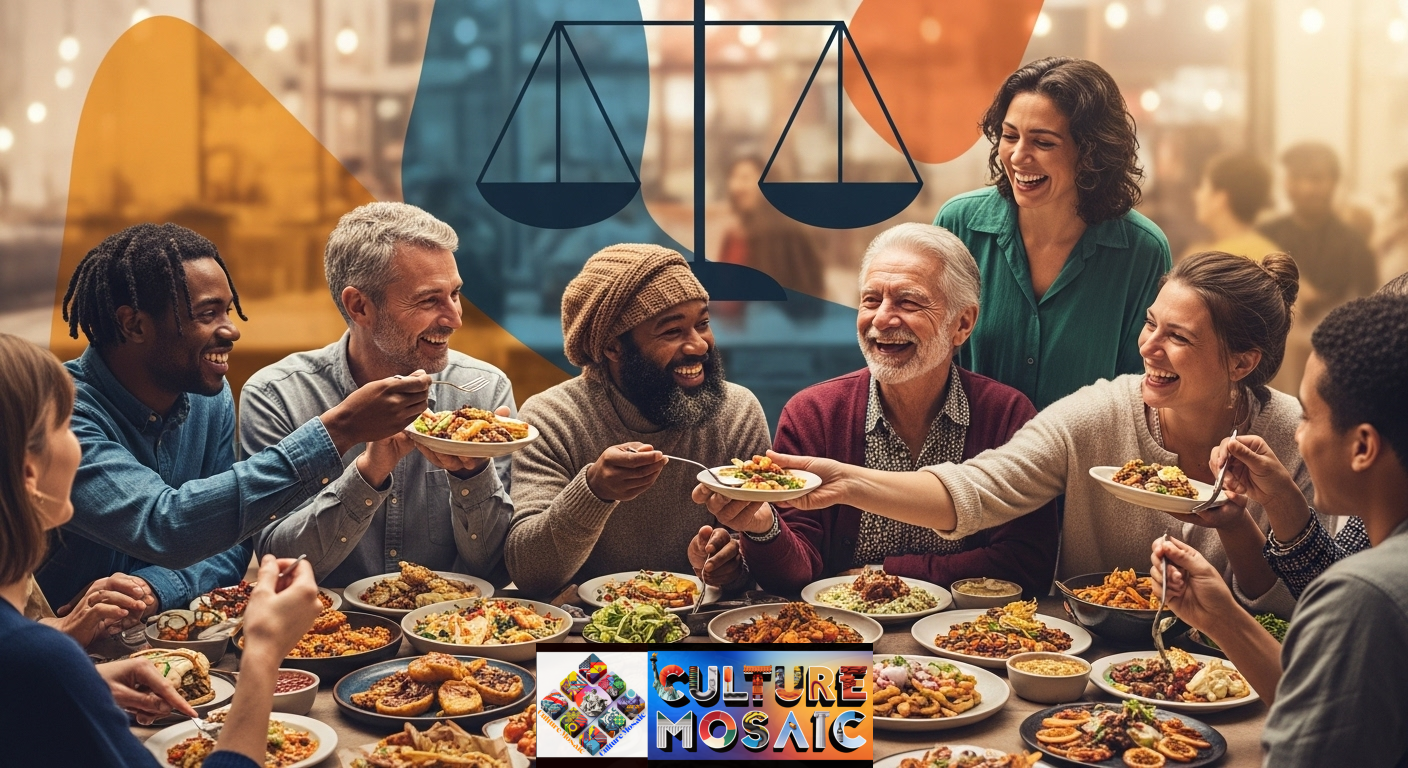
The conversation around culinary appropriation is evolving. More diners are asking questions, more food writers are examining power dynamics, and more chefs from marginalized backgrounds are gaining platforms to tell their own stories and correct the narrative.
This doesn’t mean food cultures can’t be shared. The goal isn’t culinary segregation. The goal is culinary equity: a food world where everyone who contributes cultural knowledge to American cuisine receives appropriate credit, respect, and economic benefit.
When we examine culinary appropriation honestly, we’re forced to confront larger questions about who gets opportunities in America, whose knowledge is valued, and who profits from cultural exchange. Food is never just food. It’s history, identity, resistance, and survival.
As consumers, we have power. Every time we choose where to eat, what recipes to make, which cookbooks to buy, and which food media to support, we’re shaping the future of American food culture. We can choose to perpetuate culinary appropriation, or we can choose appreciation, equity, and justice.
The difference is in understanding that every dish has a story and a community behind it. And those communities deserve more than a footnote. They deserve recognition, compensation, and respect.
Frequently Asked Questions
Can someone cook food from a culture that isn’t their own without it being culinary appropriation?
Yes, absolutely. Culinary appropriation isn’t about who’s allowed to cook what. It’s about credit, context, and compensation. If you’re cooking food from another culture with respect, acknowledging where you learned the recipes, not claiming to have invented or improved upon traditional dishes, and if you’re in a position of sharing that food commercially, finding ways to support the communities of origin, then you’re practicing appreciation, not appropriation.
How is culinary appropriation different from fusion cuisine?
Fusion cuisine can be done respectfully, or it can be a form of culinary appropriation. The difference lies in how it’s approached. Respectful fusion involves chefs with deep knowledge of multiple culinary traditions creating something new while crediting their influences. Culinary appropriation through fusion happens when someone superficially borrows elements from cuisines they don’t understand, strips them of context, markets the result as innovative without crediting the traditions they’re drawing from, and profits while people from those traditions face barriers.
Isn’t food meant to be shared? Why is culinary appropriation a problem?
Food should be shared, but sharing requires reciprocity. The problem with culinary appropriation isn’t the sharing itself but the inequality in how that sharing happens. When one person takes, profits, and receives acclaim while the other gives, struggles, and remains invisible, that’s not sharing. That’s extraction. True sharing means everyone benefits.
What should I do if I realize a restaurant I love engages in culinary appropriation?
You have options. You can speak with the ownership about your concerns and give them a chance to change their practices. You can shift your support to restaurants that are doing things more ethically. You can leave respectful reviews that mention the importance of cultural credit and context. And you can educate yourself about alternative restaurants serving similar cuisines where your money directly supports the communities of origin.
Are there examples of restaurants or chefs doing this right?
Yes, though they’re less publicized than they should be. Look for restaurants that are co-owned by people from the cultures they represent, chefs who openly credit their teachers and cultural sources by name, establishments that provide detailed cultural and historical context for their dishes, and restaurant groups that have formal partnerships or profit-sharing arrangements with communities of origin. These models exist and deserve support.

